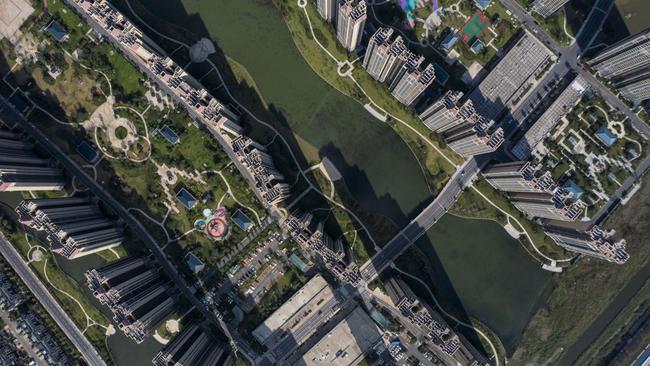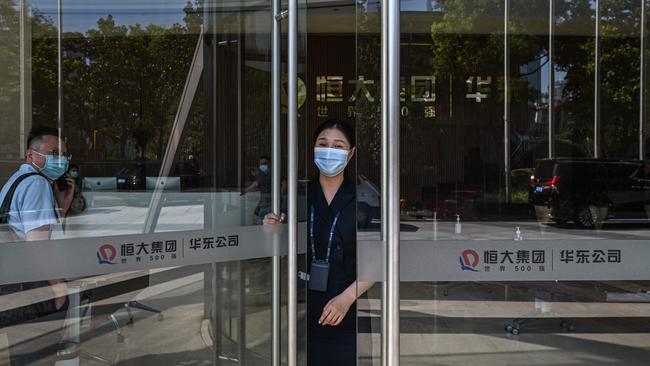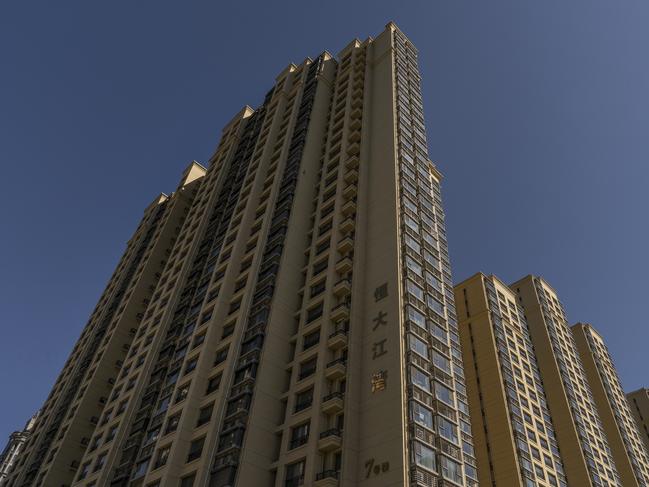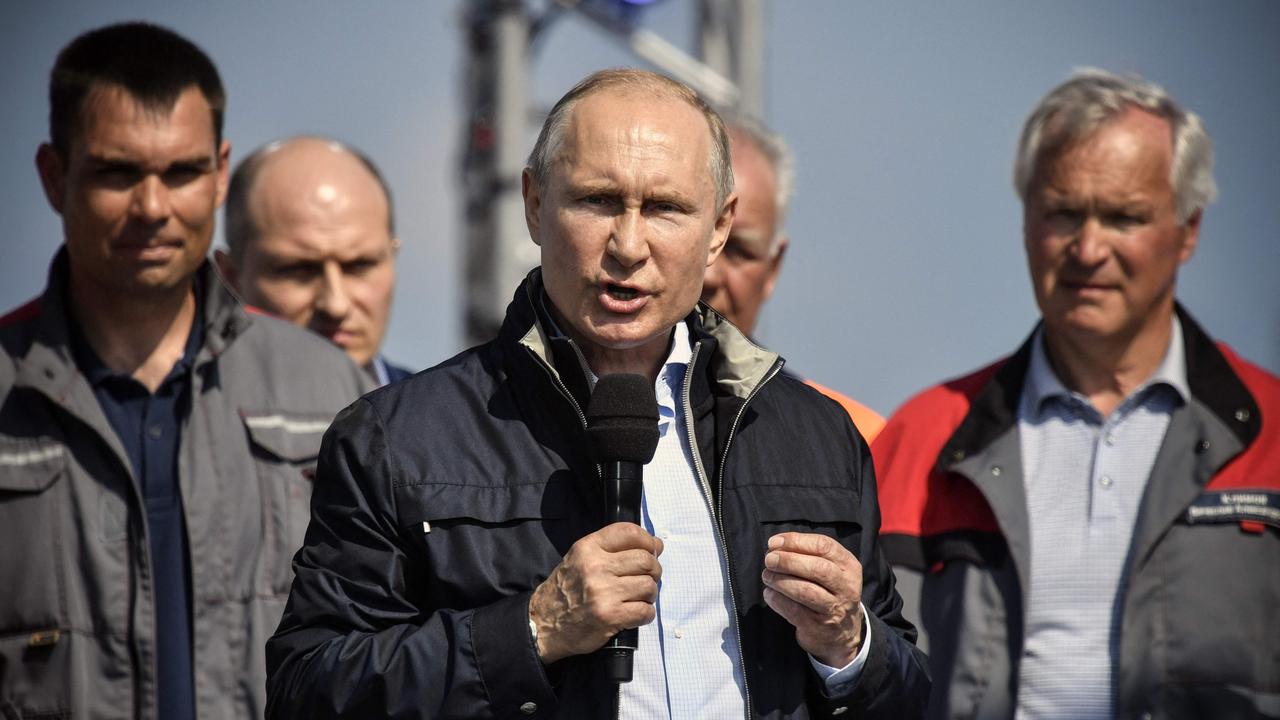Evergrande is only the latest in a chain of Chinese debt crises
In China, housing is fundamental to marriage, the future and the government’s pocketbook. The consequences of this looming disaster may not yet be clear, but recent history is illuminating.

Belgians like to say they are “born with a brick in their belly” but in China housing is arguably even more fundamental: to marriage, to saving for the future, to the economy as a whole and to the government’s pocketbook.
Now, as Evergrande Group — one of China’s top home builders, with around $300 billion in liabilities — teeters, many are wondering if China’s economy or financial system will tip over too. The answer may not be clear for a while. But a little history may be helpful in understanding what to look for.
Here is a brief history of significant Chinese debt crises over the past half-decade and how they were resolved.
2014-2016: Housing crash, market crash and debt crisis China survived the global financial crisis of 2008 by unleashing a gargantuan debt-funded stimulus — much of it ultimately funnelled into housing and infrastructure through a murky system of nonbank financial institutions.
By 2013, regulators had become seriously concerned that this shadow banking system — which was funding long-term, illiquid assets like roads and unsold apartment blocks with short-term, high-yield retail investment products — represented an existential danger. Policy makers pushed up lending rates sharply throughout 2013 to try to squeeze leverage out of the system, ultimately leading to a sharp dip in housing prices and, by mid-2015, plummeting housing and infrastructure investment, rising defaults from downstream steel and cement manufacturers, and enormous capital outflows.

To resolve the crisis, authorities employed a mix of tools to indirectly bail out overextended property developers and local governments, pushed down rates and tightened capital controls.
To grind down apartment inventories, a “slum redevelopment” program funded by state-controlled policy banks paid homeowners to upgrade to new apartments, while Beijing permitted a ramp-up in mortgage lending. That essentially shifted property developers’ debts onto household and government balance sheets, while engineering a new rise in steel prices. Local governments’ off-balance sheet debts were refinanced through a new official municipal bond market, widely viewed as implicitly backed by the central government.
The rescue prevented a systemic meltdown, but the shadow finance system bounced back strongly as well. Household and official state debt was left much higher, and the perception that housing was ultimately a one-way bet was reinforced.
2017-2018: Shadow-banking crackdown, Part II In late 2016, with the real-estate sector on the mend and the prospect of Federal Reserve rate increases putting more pressure on capital outflows, Beijing embarked on a new campaign to curb shadow finance and, in particular, the use of short-term leverage to juice returns.
Short rates rose precipitously through late 2016 and early 2017 and regulators cracked down, first on bond-backed wealth management products offered by banks, and then on older forms of shadow finance like trust loans. By late 2017, credit growth was again slowing rapidly.
But because China’s exports were also growing strongly — thanks in part to booming U.S. growth — and the property market was in good shape having just shed so much inventory, the overall impact on growth and financial stability proved manageable.
May-June 2019: Baoshang Bank takeover One consequence of the 2017 crackdown was deteriorating finances at many small regional banks — which relied on wealth management products to attract customers and earn fees. By 2018, several smaller banks were delaying reporting financial results.

In mid-2019, Beijing announced it was taking over a midsize regional bank called Baoshang Bank — and that some liabilities wouldn’t be fully guaranteed, up-ending a longstanding assumption that lending to state-owned banks was essentially risk free.
Money markets promptly panicked, with yields on low-rated negotiable certificates of deposit -— an important, unsecured borrowing instrument for Chinese banks — spiking and some small banks finding themselves locked out of the market.
Markets were only calmed after China’s central bank injected a large amount of liquidity into the banking system and Beijing announced that it was backing over 40 billion yuan of Baoshang Bank’s NCDs and partially walking back planned haircuts.
Mid-2021: Evergrande crisis The leadership’s ongoing struggle to control debt has a strong element of circularity: rules are over-tightened, creating collateral damage and sowing the seeds of new financial problems, and then eventually loosened.
That may again be the case with Evergrande, but the unusual political situation in China — with a very strong central government in the hands of a leader who appears to be planning for an extended stay at the helm, and laying the groundwork ahead of a key Communist Party Congress in 2022 — makes it harder to say than usual. President Xi Jinping has made it clear that shifting the economy away from housing and toward more productive endeavours is a priority.
For signs of escalating worries about financial institutions and banks, investors should watch NCDs, key money market rates like the one- and seven-day collateralised repos, and spreads on short-term commercial paper.
If Evergrande’s troubles begin to further infect the broader economy and real-estate market, bonds issued by stronger developers, and corporate bonds issued by local government financing vehicles, could also come under pressure. Still, experience suggests that at some point the pain to markets will become unbearable to Beijing, eventually prompting a loosening in policy.
The Wall Street Journal






To join the conversation, please log in. Don't have an account? Register
Join the conversation, you are commenting as Logout